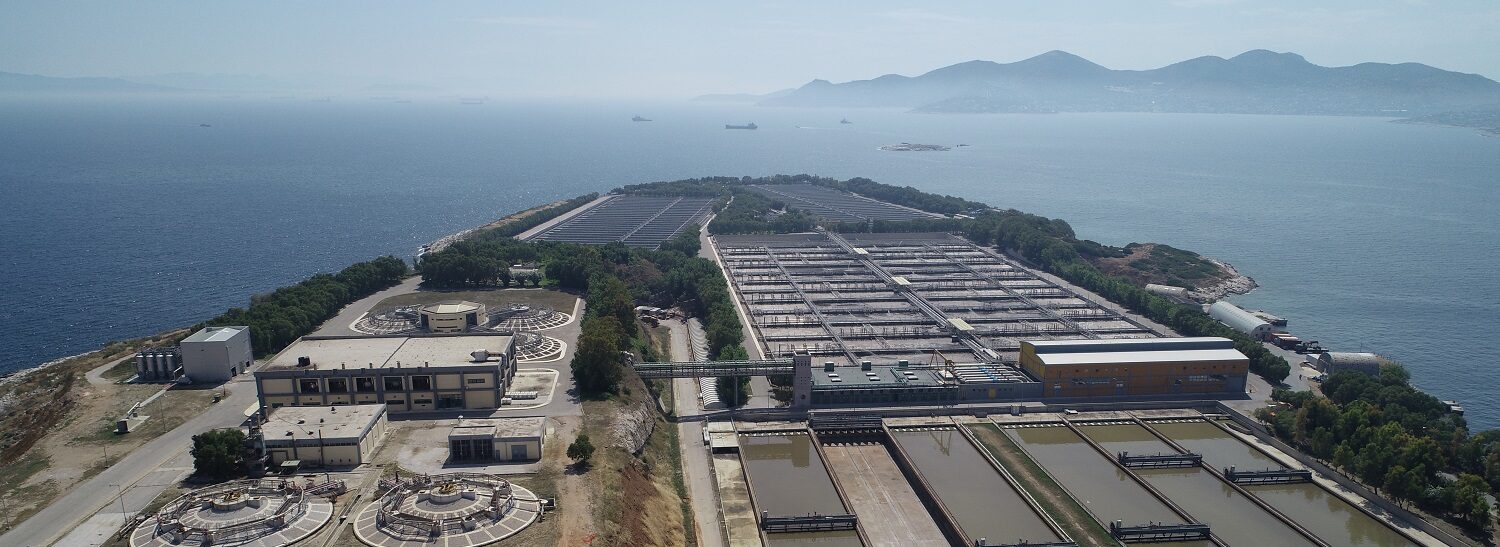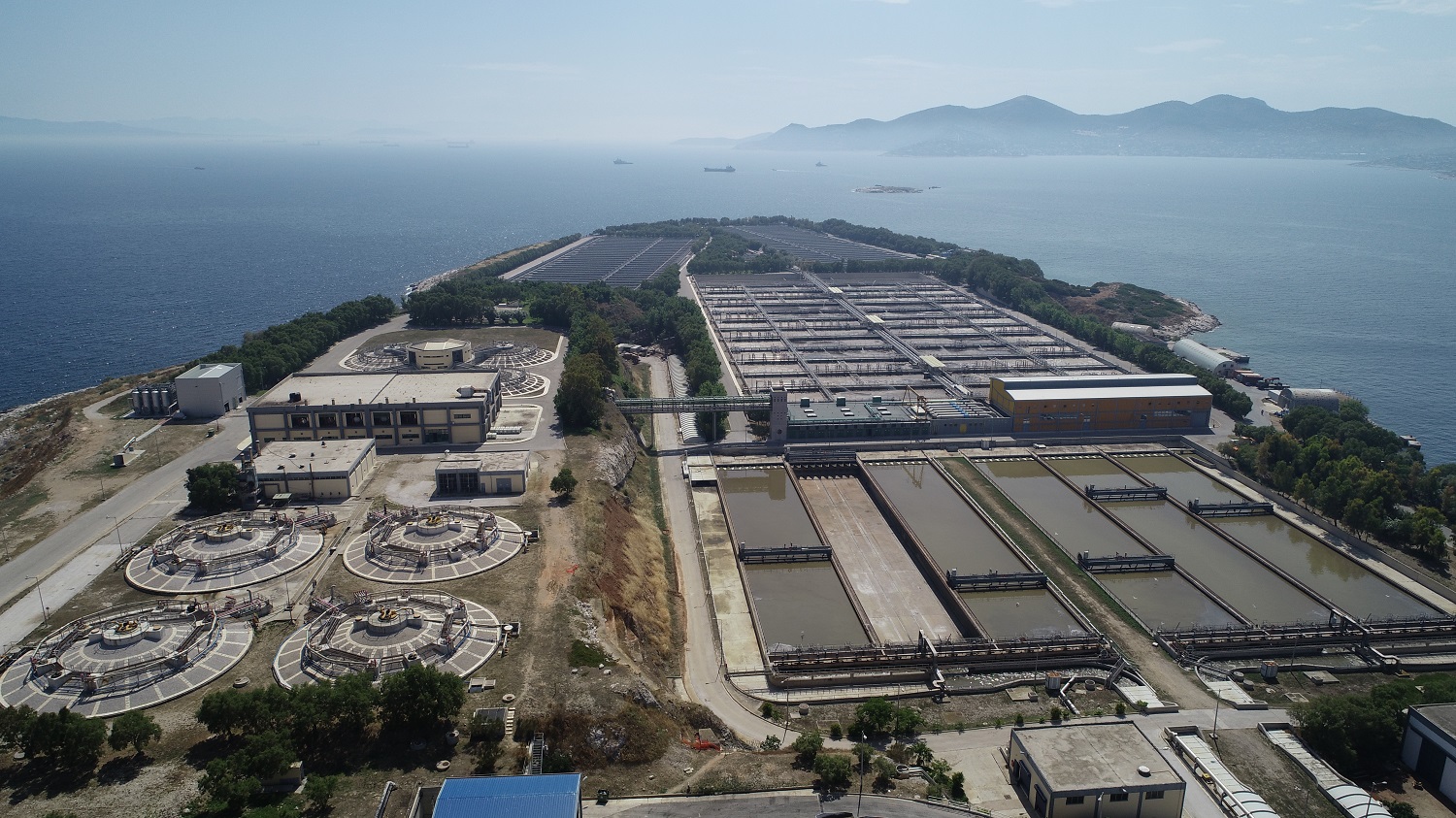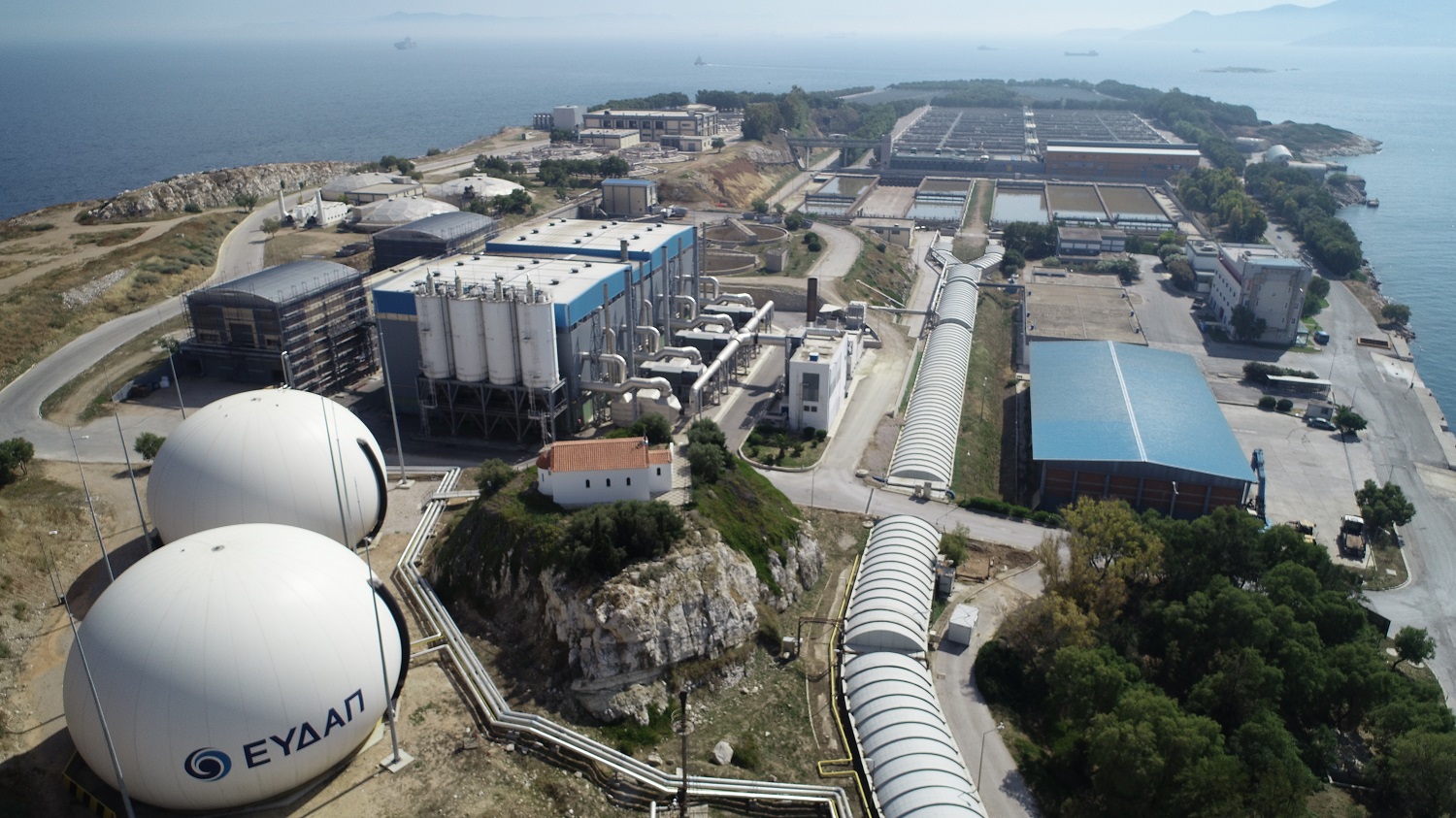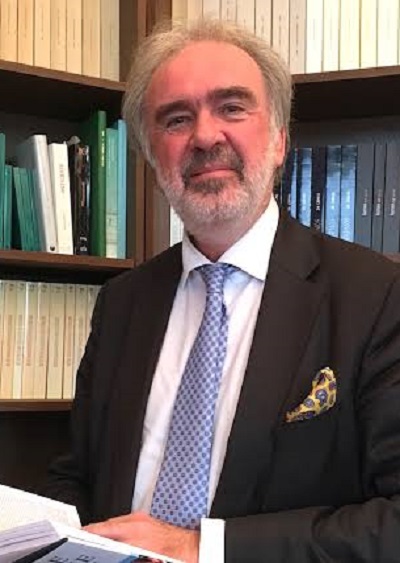
WWTP of Psyttaleia – Courtesy of EYDAP’s Photography Archive
Continuous and substantial environmental education for the whole of society, in combination with the training of skilled human resources, qualified to provide solutions to critical environmental issues, is of decisive importance for our planet’s future.
The need for sustainable development with a long-term perspective and without abusing our planet’s natural resources has become apparent. The impact of large amounts of carbon dioxide emissions into the atmosphere and their contribution to global warming and climate change are well-known, as is the need for solutions with a view to the future, lifting the obsession for short-term profit. The rapid advances of modern technology gradually help make it clear to both the general public and the industry: sustainable practices in areas such as electricity networks, agriculture, farming, architecture design and spatial planning, in addition to being better for the environment, are more efficient and profitable in the long term. Certainly, the initial cost of transitioning from an old system to a new one is a major factor preventing and delaying any significant change in most industries. However, the catastrophic consequences of some of the older practices, as well as the growing demand of the global population for energy and food, show clearly that this transition to new solutions and techniques is inevitable, and in fact must be accelerated.
Concerning the extremely important issue of energy and electricity, technologies such as smart grids can contribute to reducing the use of fossil fuels and the corresponding carbon emissions. Instead of providing electricity through traditional, one-way flow, smart grids enable a two-way flow of both electricity and data with digital communications technology, using smart meters to monitor the demand and consumption of electricity. Electricity providers can then use those data to better manage and meet the energy needs of their customers, to solve faster any problems, and to integrate renewable energy sources more easily in the network.
In contrast with the above, i.e. in an effort to become independent from large regional and national electricity networks, a solution that has been proposed is the creation of microgrids; local energy production grids that can use multiple renewable energy sources. Technologies such as transparent photovoltaic glass that does not obstruct view and looks like a common window, or photovoltaic panels in the shape of roof tiles may aid in designing autonomous buildings in terms of energy, with very low CO2 emissions. In the context of the Paris Agreement on Climate Change, cities around the world have already committed to minimizing the carbon emissions of their public buildings in this way.
A similar initiative to reduce the carbon footprint of buildings is an attempt to redesign how human dwellings operate on a larger scale, starting with small communities, such as Trent Basin in Nottingham, UK. Using modern technologies to ‘construct’ the digital twin of a building or a whole community -which entails the creation of a digital model, including data on the production and consumption of electricity, the building’s temperature, etc.-, scientists can experiment, test and run simulations, and thus produce useful results for the physical buildings, with the aim of optimizing the use of renewable energy sources for the provision of heat and power. At the same time, this technology offers visualization and presentation of data in easily comprehensible 3D digital models, thus contributing to better educating the residents about sustainability.
Another burning issue is that of agriculture and farming; industries that require huge amounts of water and energy produces pollutants and destroys large areas of land due to the heavy use of pesticides. Sustainable farming practices that aim to increase biodiversity, improve soil health and quality, and thus in the long run to greater production with fewer purchased inputs, can be applied in conjunction with technological solutions such as those used in the Netherlands; a small country, but also the world’s second-largest food exporter – based on the value of exports – after the US. Although there is certainly room for improvement in terms of clean energy, Dutch greenhouses maximize their efficiency and production per square meter while using fewer resources (mainly water) by adopting new technologies. Scientists test and experiment by tweaking every little detail in the parameters that affect the climate conditions inside the greenhouses. They also use artificial intelligence in the form of ‘climate computers’, which monitor the plants’ behavior and constantly adjust the conditions, thus optimizing and maximizing production. Apart from food, however, the Netherlands also exports its growing knowledge in this field, by organizing conferences such as GreenTech.
Education regarding environmental issues, as well as the dissemination of environmental know-how and technical expertise, is crucial. In our country, a large number of Postgraduate Programs can contribute in this direction.
Regarding agriculture, but also the general management and protection of the natural environment, there are postgraduate programs such as “Plant Medicine and Environment” by the University of Thessaly, “Sustainable Fishing, Aquaculture” by the University of Patras, “Analysis and Management of Manmade and Natural Disasters” by the International Hellenic University (IHU) and the Fire Academy, “Environmental, Disaster, and Crises Management Strategies” by the National and Kapodistrian University of Athens (NKUA), as well as seminars and agriculture training programs by the Hellenic Agricultural Organization (HAO) “Demeter”, the “New Agriculture for a New Generation” Organization and the Syggrou Estate.
In the field of architectural design and spatial planning using new technologies, several postgraduate programs are offered, such as “Architecture and Urban Design: Mediterranean Futures – Green Deal” by the University of Patras, “Geoinformatics and Geospatial Technologies” by the Cyprus University of Technology, “Applied Geography and Spatial Planning” by the Harokopio University, “Human Geography, Spatial Development and Planning” by the University of the Aegean and “Climate Crisis and Information and Communication Technologies” by the University of Piraeus.
In terms of energy systems and sustainable development, educational institutions such as the University of Thessaly, the International Hellenic University, the University of West Attica (UWA), and Harokopio University offer related postgraduate programs, such as “Sustainable Management of Aquatic Environment“, “Renewable Energy Systems: Design, Development & Optimization“, “Analysis and Management of Energy Systems“, “Sustainable Management of Environmental Change and Cyclical Economy“, “Smart Grid Energy Systems“, “Energy Systems“, “Energy and Environmental Projects“, “Sustainable Development” and “Oil and Gas Technology“.
The challenges posed by all of the above from a legislative, economic, and business perspective are of particular importance as well, and are covered by postgraduate programs such as “Bioeconomy: Biotechnology and Law” and “Energy Law, Business, Regulation and Policy” by the IHU, “Entrepreneurship and Consulting in Rural Development” by the Agricultural University of Athens and “Energy and Environmental Investments” of the UWA.
Lastly, emphasizing the importance of educating the public about the environment, climate change and its consequences, and the need for sustainable, long-term planning, postgraduate programs such as “Education for Sustainability and the Environment” by the University of Thessaly and “Environment and Health. Management of Environmental Issues with Health Impacts” by the Medical School of NKUA are also highly relevant; as is also the research work on environmental issues carried out by institutions such as the Helmi Museum of Natural History in Zakynthos and the Natural History Museum of Crete. Continuous and substantial environmental education for the whole of society, in combination with the training of skilled human resources, qualified to provide solutions to critical environmental issues, is of decisive importance for our planet’s future.
Παράλληλα όμως με το σημαντικότατο επιστημονικό, ερευνητικό και εκπαιδευτικό έργο που διεξάγεται σε αυτά τα γνωστικά πεδία, ο προβληματισμός σχετικά με την κλιματική αλλαγή και τις καταστροφές που προκαλεί -και όσες αναμένεται να προκαλέσει- έχει διεισδύσει στο σύνολο της κοινωνίας και έχει εκφραστεί από πλήθος καλλιτεχνών. Εκθέσεις όπως η NATURA TRANSITA (‘ΦΥΣΗ ΣΕ ΜΕΤΑΒΑΣΗ’) , μια έκθεση περιβαλλοντικής φωτογραφίας του Γιάννη Τζώρτζη στην γκαλερί a.antonopoulou.art και η έκθεση Portals | Πύλη του ΝΕΟΝ με 59 καλλιτέχνες από 27 χώρες αποτυπώνουν την ανησυχία και τον στοχασμό πάνω σε έννοιες όπως η αλλαγή, η μετάβαση από μια κατάσταση σε μια άλλη και η ανατροπή της κανονικότητας αναφορικά με τη φύση αλλά και την κοινωνία.
Alongside the important scientific, research and educational work carried out in these fields of knowledge, the concern about climate change and the disasters it causing -and those that it is expected to cause in the future- has penetrated into society and has already been expressed by many artists. NATURA TRANSITA (‘NATURE IN TRANSITION’), an exhibition of environmental photography by Giannis Tzortzis at the a.antonopoulou.art gallery and Portals, an exhibition with 59 artists from 27 countries organized by NEON, are only two examples of this artistic trend that captures both the anxiety and the reflection on concepts such as change, the transition between two states, and the subversion of normality regarding nature and society.

Danh Võ – Untitled, 2021 (detail) – Portals

Giannis Tzortzis – New South Wales-Australia – NATURA TRANSITA











Leave A Comment